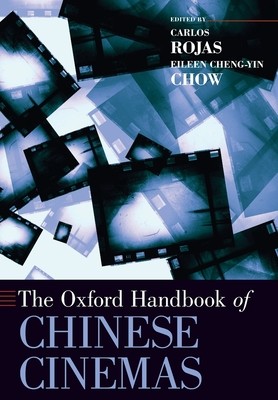
- We will send in 10–14 business days.
- Publisher: Oxford University Press, USA
- ISBN-10: 0190050713
- ISBN-13: 9780190050719
- Format: 16.8 x 24.1 x 4.1 cm, minkšti viršeliai
- Language: English
- SAVE -10% with code: EXTRA
Oxford Handbook of Chinese Cinemas (e-book) (used book) | bookbook.eu
Reviews
Description
What does it mean for a cinematic work to be "Chinese"? Does it refer specifically to a work's subject, or does it also reflect considerations of language, ethnicity, nationality, ideology, or political orientation? Such questions make any single approach to a vast field like "Chinese cinema" difficult at best. Accordingly, The Oxford Handbook of Chinese Cinemas situates the term more broadly among various different phases, genres, and distinct national configurations, while taking care to address the consequences of grouping together so many disparate histories under a single banner.
Offering both a platform for cross-disciplinary dialogue and a mapping of Chinese cinema as an expanded field, this Handbook presents thirty-three essays by leading researchers and scholars intent on yielding new insights and new analyses using three different methodologies. Chapters in Part I investigate the historical periodizations of the field through changing notions of national and political identity -- all the way from the industry's beginnings in the 1920s up to its current forms in contemporary Hong Kong, Taiwan, and the global diaspora. Chapters in Part II feature studies centered on the field's taxonomical formalities, including such topics as the role of the Chinese opera in technological innovation, the political logic of the "Maoist film," and the psychoanalytic formula of the kung fu action film. Finally, in Part III, focus is given to the structural elements that comprise a work's production, distribution, and reception to reveal the broader cinematic apparatuses withinwhich these works are positioned. Taken together, the multipronged approach supports a wider platform beyond the geopolitical and linguistic limitations in existing scholarship. Expertly edited to illustrate a representative set of up to date topics and approaches, The Oxford Handbook of Chinese Cinemas provides a vital addition to a burgeoning field still in its formative stages.
EXTRA 10 % discount with code: EXTRA
The promotion ends in 21d.23:10:58
The discount code is valid when purchasing from 10 €. Discounts do not stack.
- Publisher: Oxford University Press, USA
- ISBN-10: 0190050713
- ISBN-13: 9780190050719
- Format: 16.8 x 24.1 x 4.1 cm, minkšti viršeliai
- Language: English English
What does it mean for a cinematic work to be "Chinese"? Does it refer specifically to a work's subject, or does it also reflect considerations of language, ethnicity, nationality, ideology, or political orientation? Such questions make any single approach to a vast field like "Chinese cinema" difficult at best. Accordingly, The Oxford Handbook of Chinese Cinemas situates the term more broadly among various different phases, genres, and distinct national configurations, while taking care to address the consequences of grouping together so many disparate histories under a single banner.
Offering both a platform for cross-disciplinary dialogue and a mapping of Chinese cinema as an expanded field, this Handbook presents thirty-three essays by leading researchers and scholars intent on yielding new insights and new analyses using three different methodologies. Chapters in Part I investigate the historical periodizations of the field through changing notions of national and political identity -- all the way from the industry's beginnings in the 1920s up to its current forms in contemporary Hong Kong, Taiwan, and the global diaspora. Chapters in Part II feature studies centered on the field's taxonomical formalities, including such topics as the role of the Chinese opera in technological innovation, the political logic of the "Maoist film," and the psychoanalytic formula of the kung fu action film. Finally, in Part III, focus is given to the structural elements that comprise a work's production, distribution, and reception to reveal the broader cinematic apparatuses withinwhich these works are positioned. Taken together, the multipronged approach supports a wider platform beyond the geopolitical and linguistic limitations in existing scholarship. Expertly edited to illustrate a representative set of up to date topics and approaches, The Oxford Handbook of Chinese Cinemas provides a vital addition to a burgeoning field still in its formative stages.


Reviews